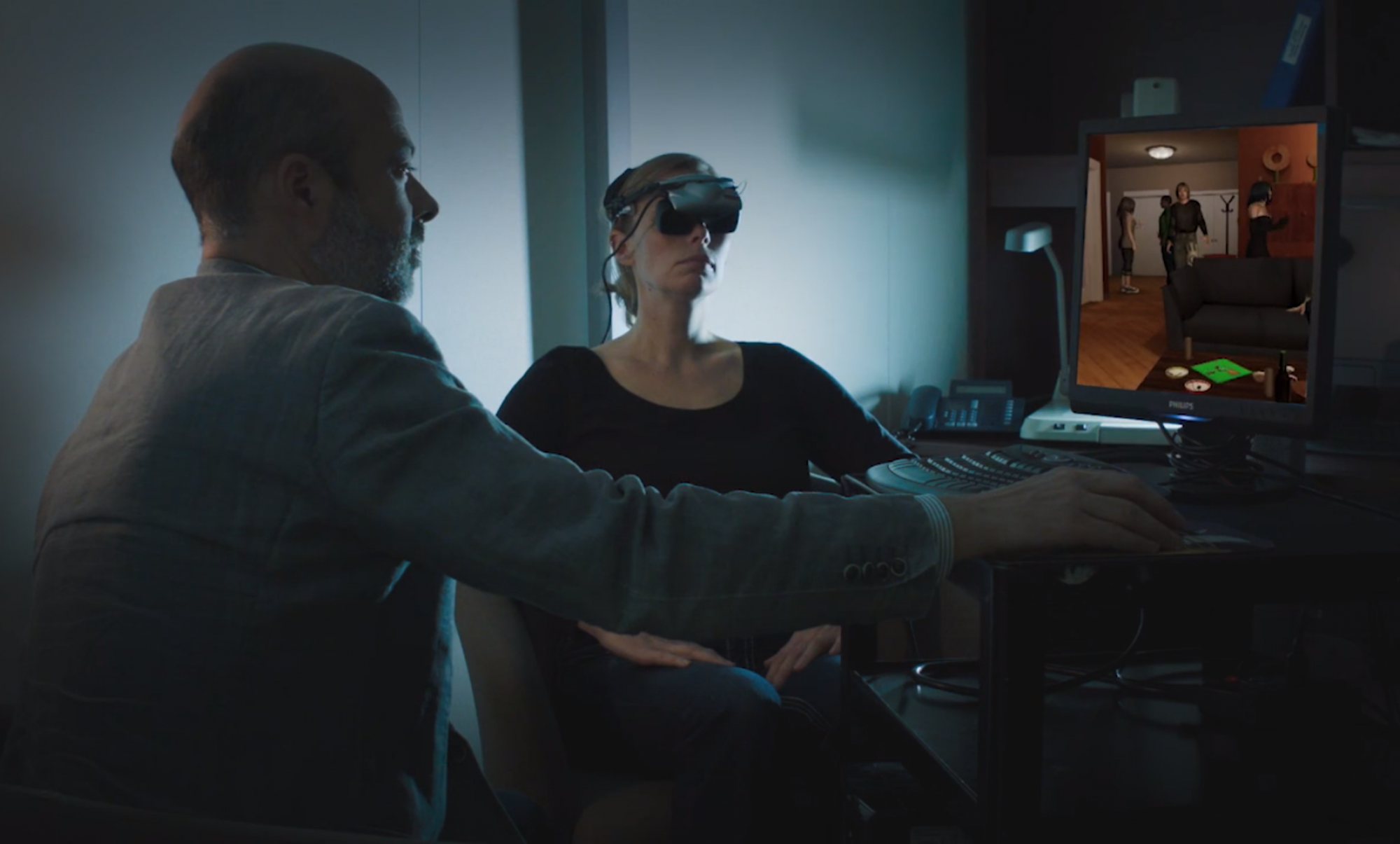Immersive VR headsets (HMDs)

With this type of virtual contact, the user can be completely immersed in virtual reality. This illusion is made possible through the use of a virtual reality helmet (called HMD or Head Mounted Display) that is either monoscopic or stereoscopic and through a piece of equipment that tracks movements (tracker). The virtual reality helmet is composed of two miniature televisions.The movement tracking equipment (“tracker“) reacts to the head movement of the individual, thereby allowing the user to visit environments in 3D. On the other hand, the computer varies the information presented to the user as a function of his/her movements. This thus permits the creation of an illusion of the user being in a 3D world.
Desktop VR

This type of system refers to the use of a conventional computer screen for immersion into a virtual world. This technology allows the user to experience subjective immersion within a virtual world and permits the user to interact with it by means of devices such as the keyboard, the mouse or the “joystick”.The third dimension is made possible by the use of a computer software designed to simulate certain aspects of the environment such as perspective, rotation, interposition of objects, etc. This type of access to virtual reality is primarily used for gaming but it has also been made popular in certain professional fields (engineering, industrial design, architecture). Of course, because the individual views the information in two dimensions or on a television, the feeling of immersion is felt to a much lesser degree.
Projected VR

The projected VR is variation on a simple computer, where there is fusion, thanks to 3D glasses, between the data projected from two different sources. The illusion of seeing in 3D is thus reproduced, as in the case of the 3D film. The user can however interact with the virtual world and manipulate virtual reality objects in 3D.
Immersive room («CAVE»)

The immersive room (also called CAVE in reference to C – Automatic Virtual Environment) is a more immersive version of projected VR described above. The user wears 3D glasses and stand in the centre of a room where a virtual environment is projected on the walls, ceiling and floor. The 3D glasses allows the integration of information and the individual can feel fully “immerged” into virtual scenes.
Thanks to a research grant obtained by the Ministère du Développement Économique Régional et de la Recherche du Québec, the Lab is now one of the few institutions in the world who has a six-wall CAVE. We named it ”PSYSHÉ”.

The CAVE requires three projectors RGB, three computers (one for each wall) as well as the additional main computer. The power of these equipments are very important to maximize the image quality, allowing the user to feel fully immersed into the virtual world .

Stereoscopy is “active”, meaning the image is perceived individually by each eye. In addition, a tracker is attached on top of the glasses and records the user’s position to modify the point of view on the wall.

Equipment used in our Lab
Here is a description of the main components of the lab’s equipment (excluding the equipement used for PSYCHÉ):
a) 15 workstations for technicians and therapists equipped with high-performance computers
b) Multiples types of head-mounted displays at low cost (p.ex., e-Magin™, Vuzix™) to high-performance (p.ex., nVisor Sx™, VR1280™);
c) Variety of trackers from 3 DOF (InertiaCube™) to 6 DOF to ultrasound (IS-900™), optical (PPTx™) or magnetic (Flock of Bird™);
d) Infra-red visual pursuit system from ISCAN™;
e) Virtual gloves (DataGlove™ ou 5DT™);
f) Augmented reality system (Videovision™);
g) six-wall immersive room (Virtools™ or Vizard™);
h) Scent generator (ScentPalette™);
i) Feedback system (No Vint™) .

